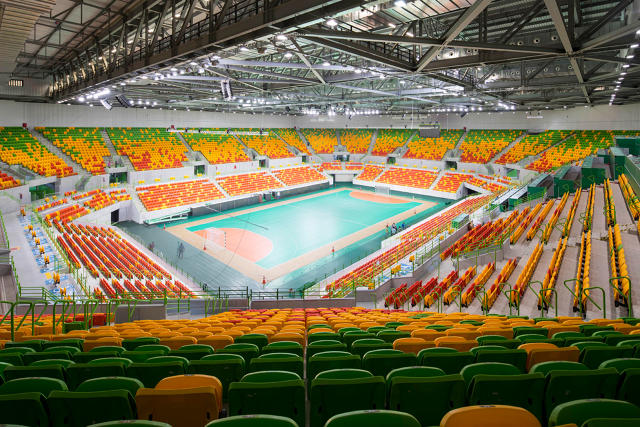
Olympic Venues Are Designed To Transform Into Schools After The Games
After the 2004 Olympics in Athens, the massive venues built for the Games were abandoned for more than a decade. Now they're partly in use as slum-like housing for refugees. But the village—which costs twice as much as budgeted, at around 15 billion euros—was never really planned for use after the Games ended.
Rio is hoping to do things differently: In a plan that Mayor Eduardo Paes calls "nomadic architecture," some of the modular venues can be taken apart and rebuilt into schools and community centers. He was inspired by the buildings at the London Olympics, which were designed to be taken down after use, but wanted to go further.
"He said, 'What is the opportunity that we create these temporary buildings so that they would have a second life beyond just a large tent? Is there a way of thinking about them as modular components that can then be rebuilt?'" says Bill Hanway, global sports leader for AECOM, the engineering firm that created the masterplan for the Olympic Village in Rio.
The handball venue, called Future Arena, will be taken apart after the Olympics and rebuilt into four elementary schools, each for 500 students; the facade of the building will turn into sunshades and rain screens for the schools.
At the massive international broadcast center, steel frames around the building currently hold up generators and air conditioners for 20,000 journalists. When they leave, the frame can be repurposed as the base of a new high school. "That's a simple move of taking a structure that's not necessary in the future of the building and moving it to a new location and giving it a new life," says Hanway.
At the Aquatic Center, the temporary swimming pools are designed to be easily dismantled and reused. Parts of other buildings, like the 18,000-plus seats inside the Olympic Tennis Center, will be reused elsewhere.
"No one wants to leave white elephants," says Hanway. "If you look back on some of the other facilities, why would Athens ever need a baseball stadium after the Olympic Games are done? We don't want to see that ever again in terms of what the IOC delivers for Olympic Games. The principle was if it's a sport that doesn't have a long-term legacy in Brazil, then find a way to remove it and use it for other kinds of development."
Some of the buildings in Rio already existed, helping avoid new construction completely. Whether they are actually repurposed is, of course, an open question. But the option is there, and for Los Angeles, which will host the Olympics in 2024, AECOM is already planning to use the same strategy. "We're only building one new venue," says Hanway. "Everything else already exists or is temporary."